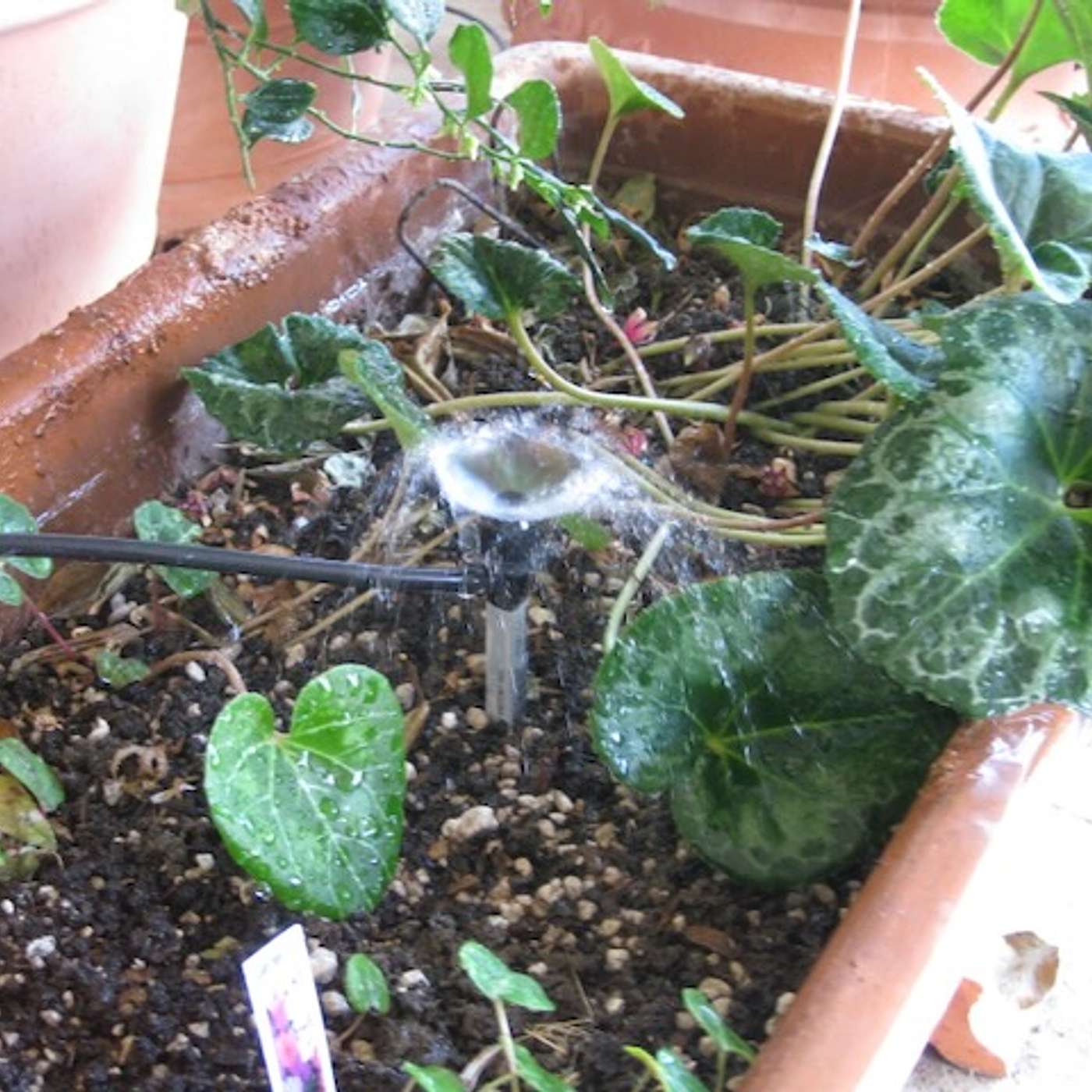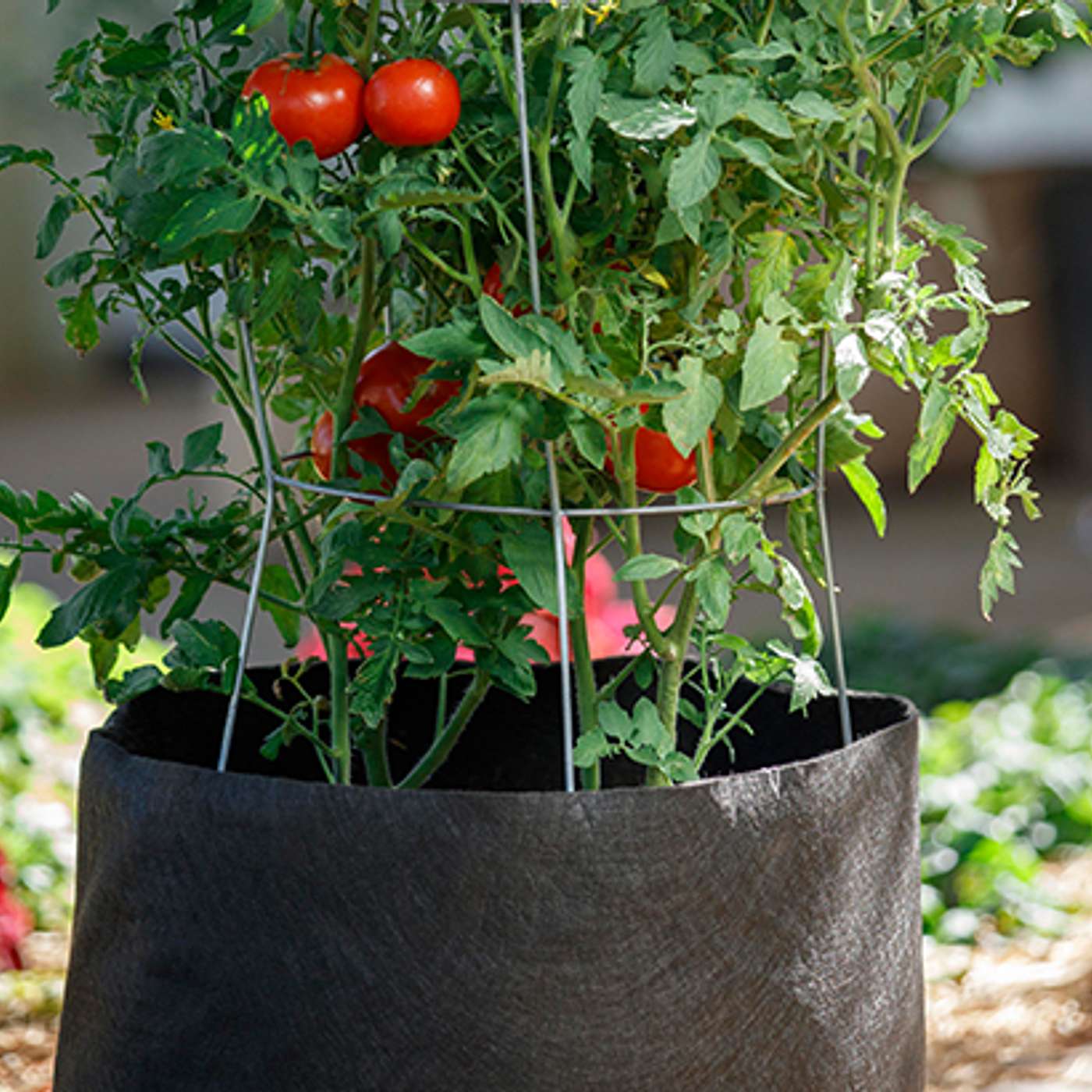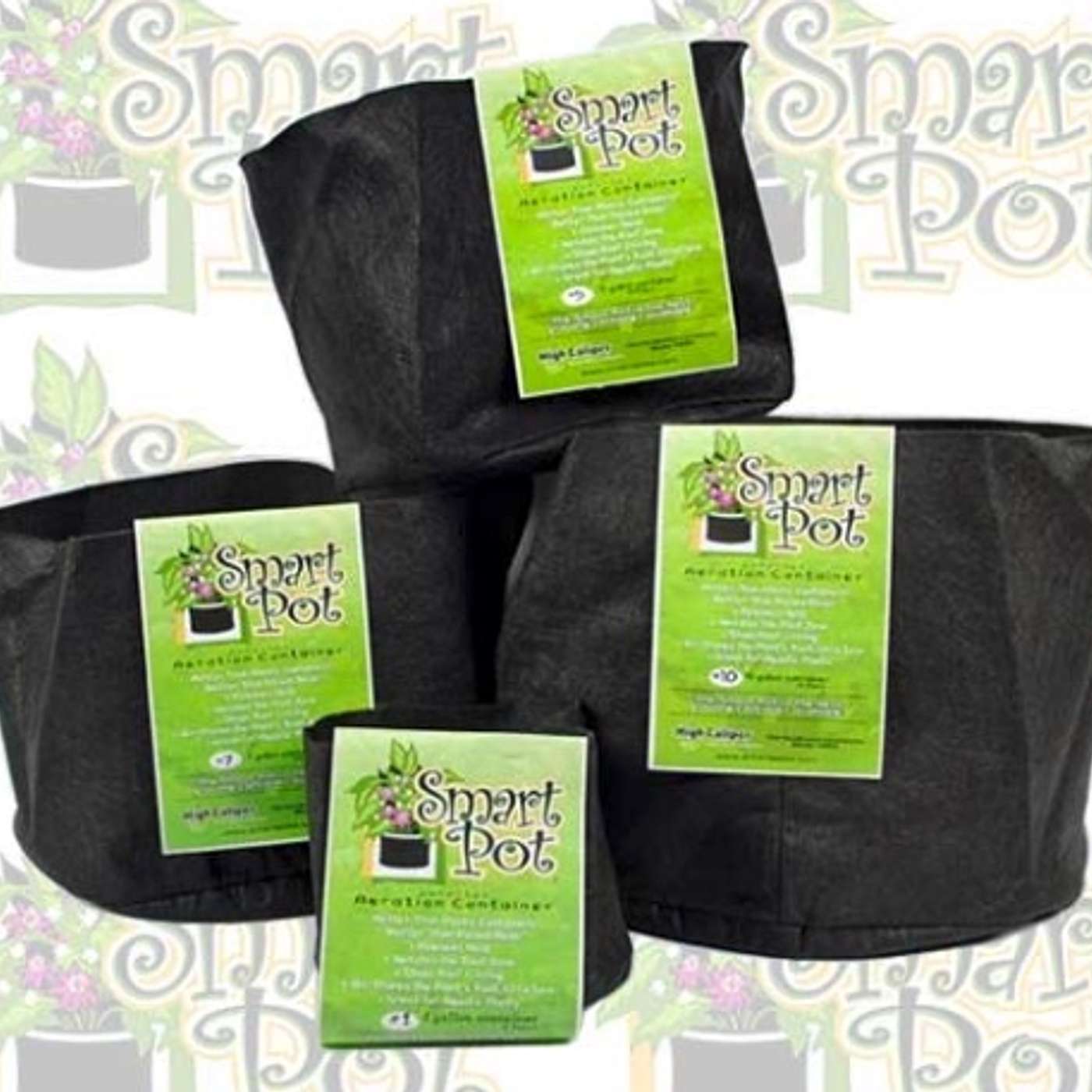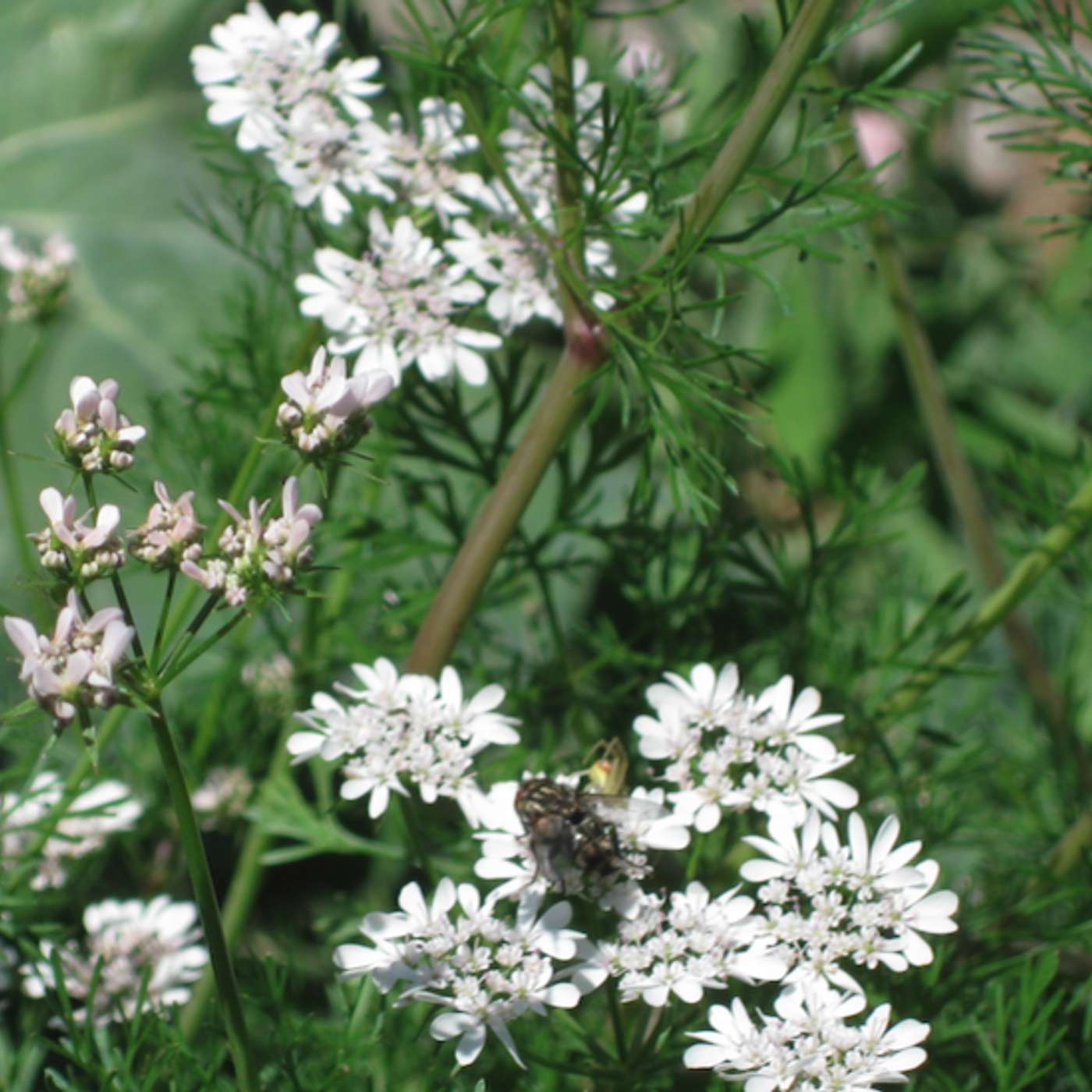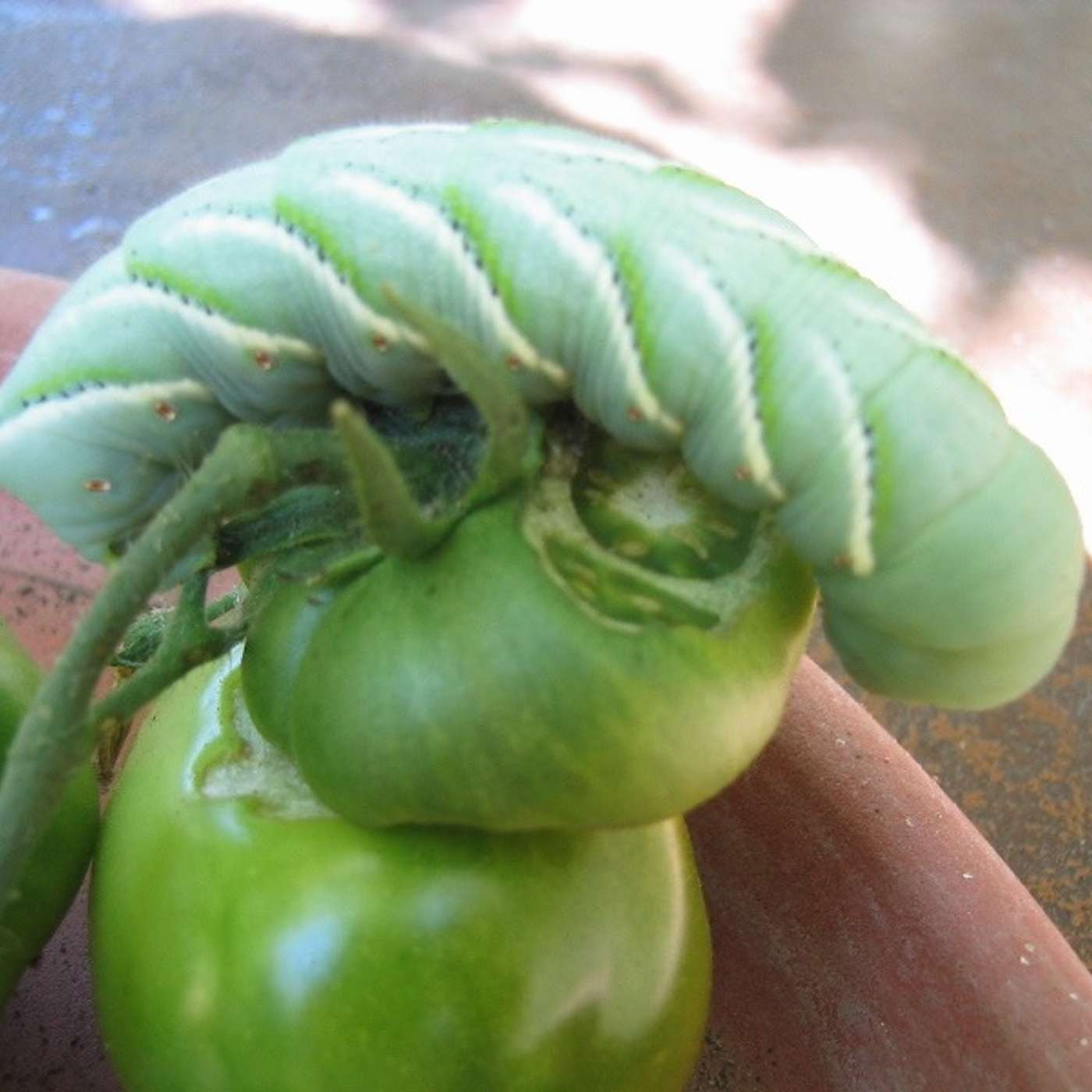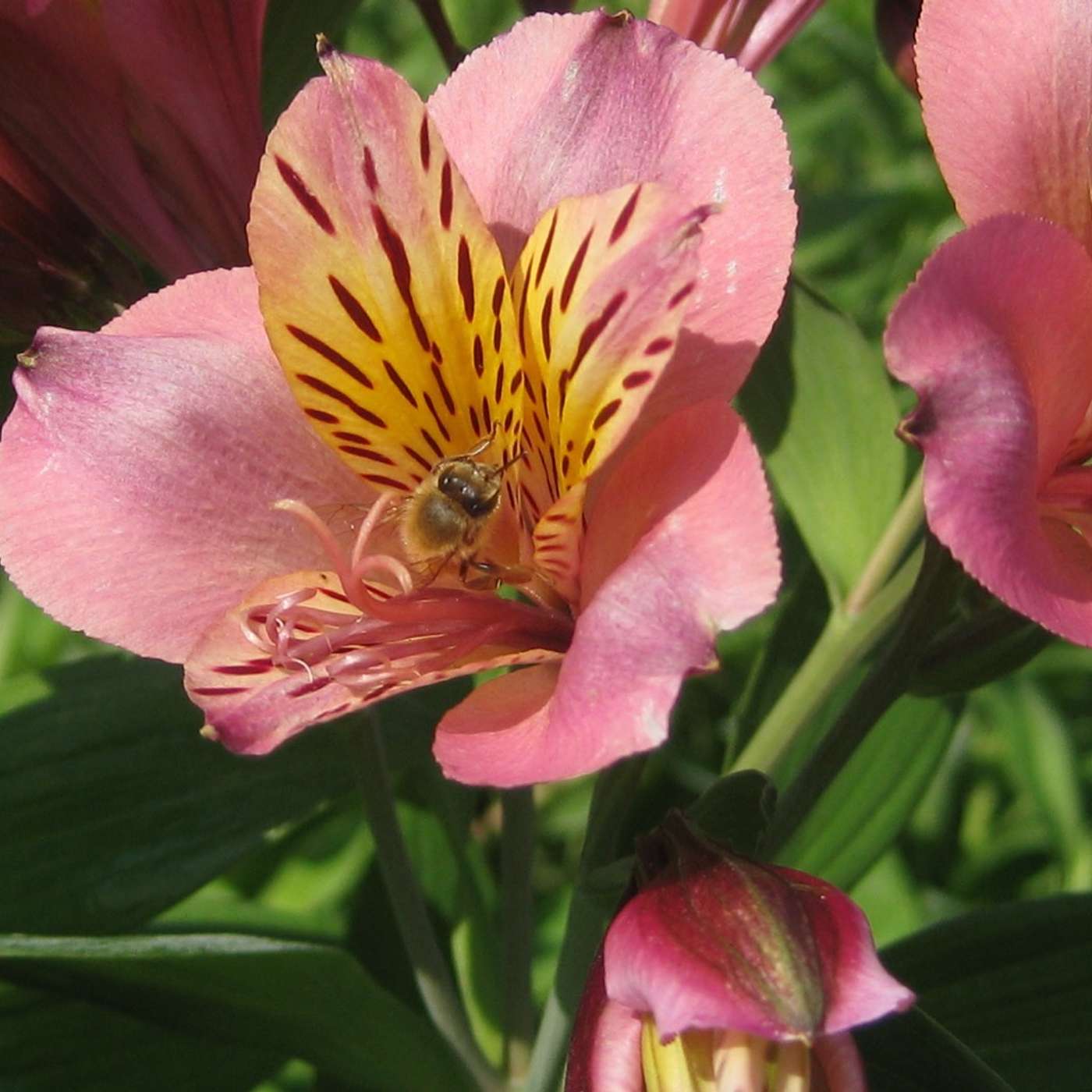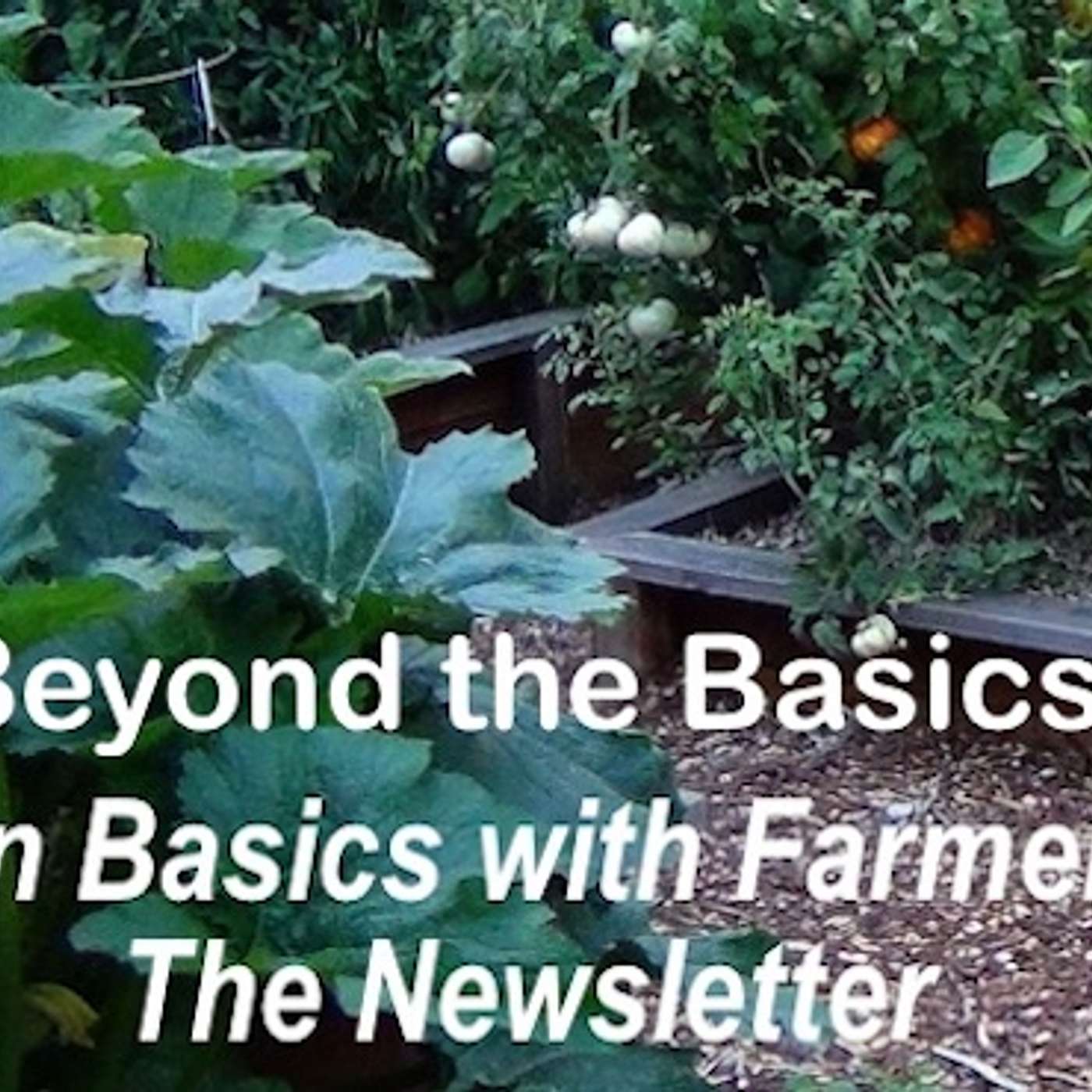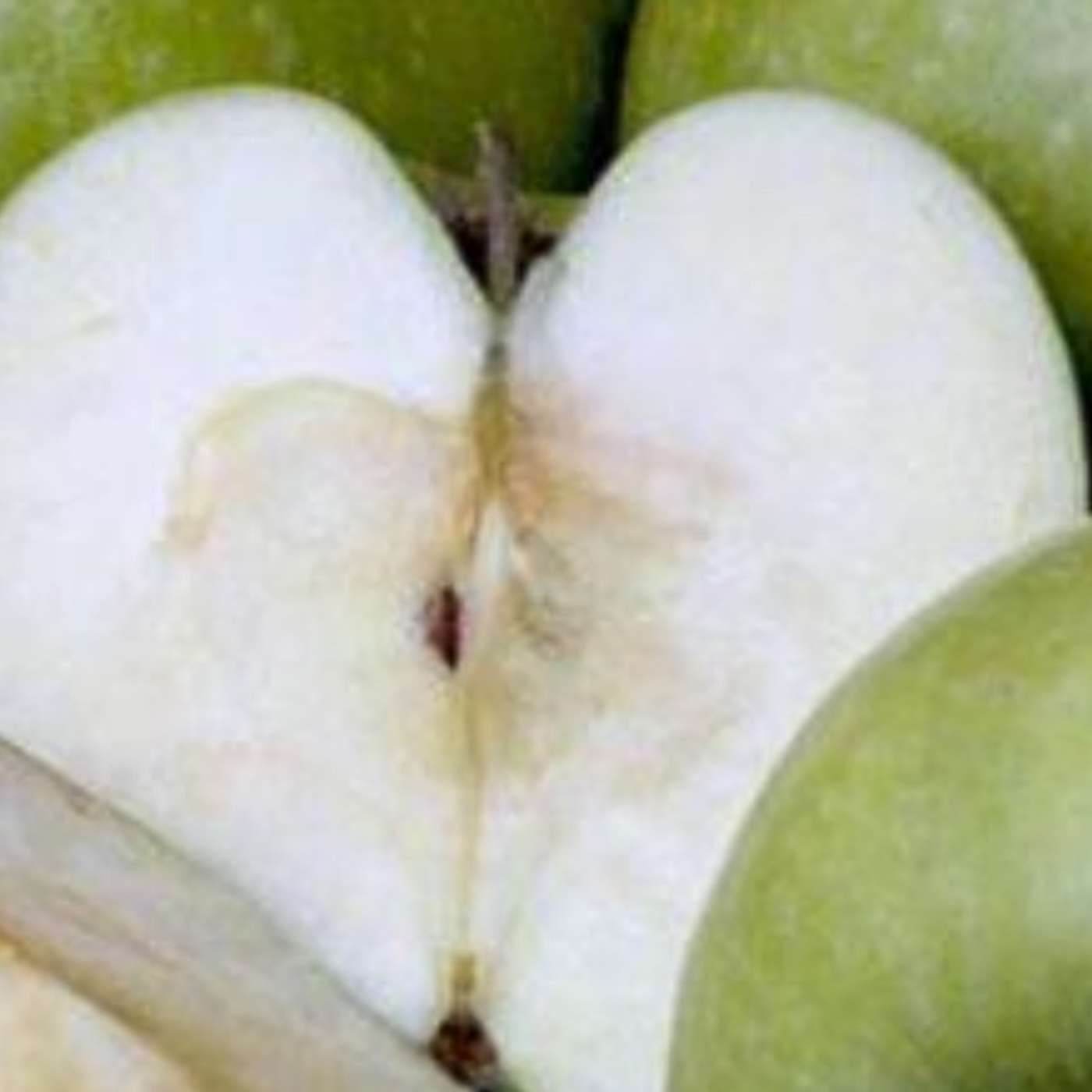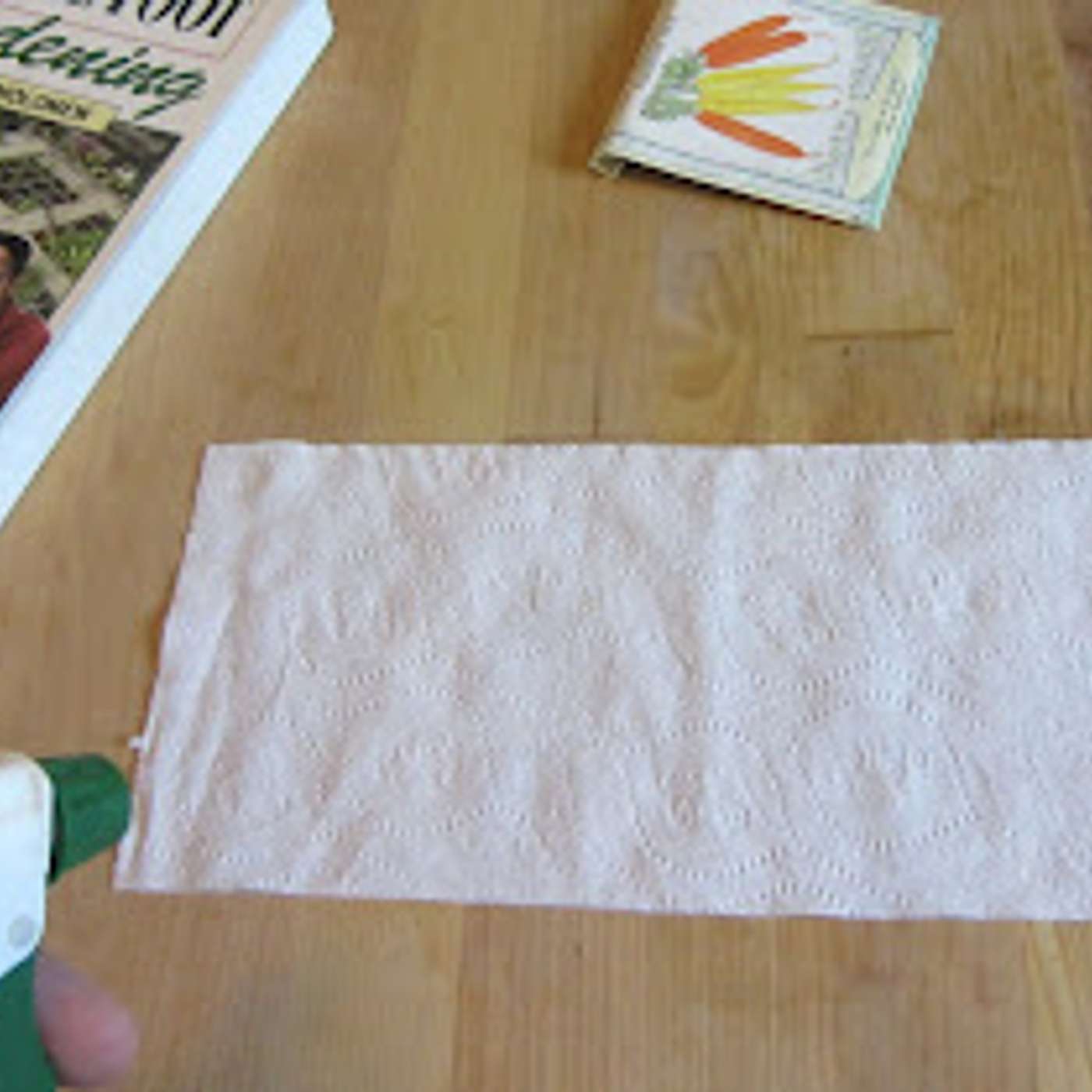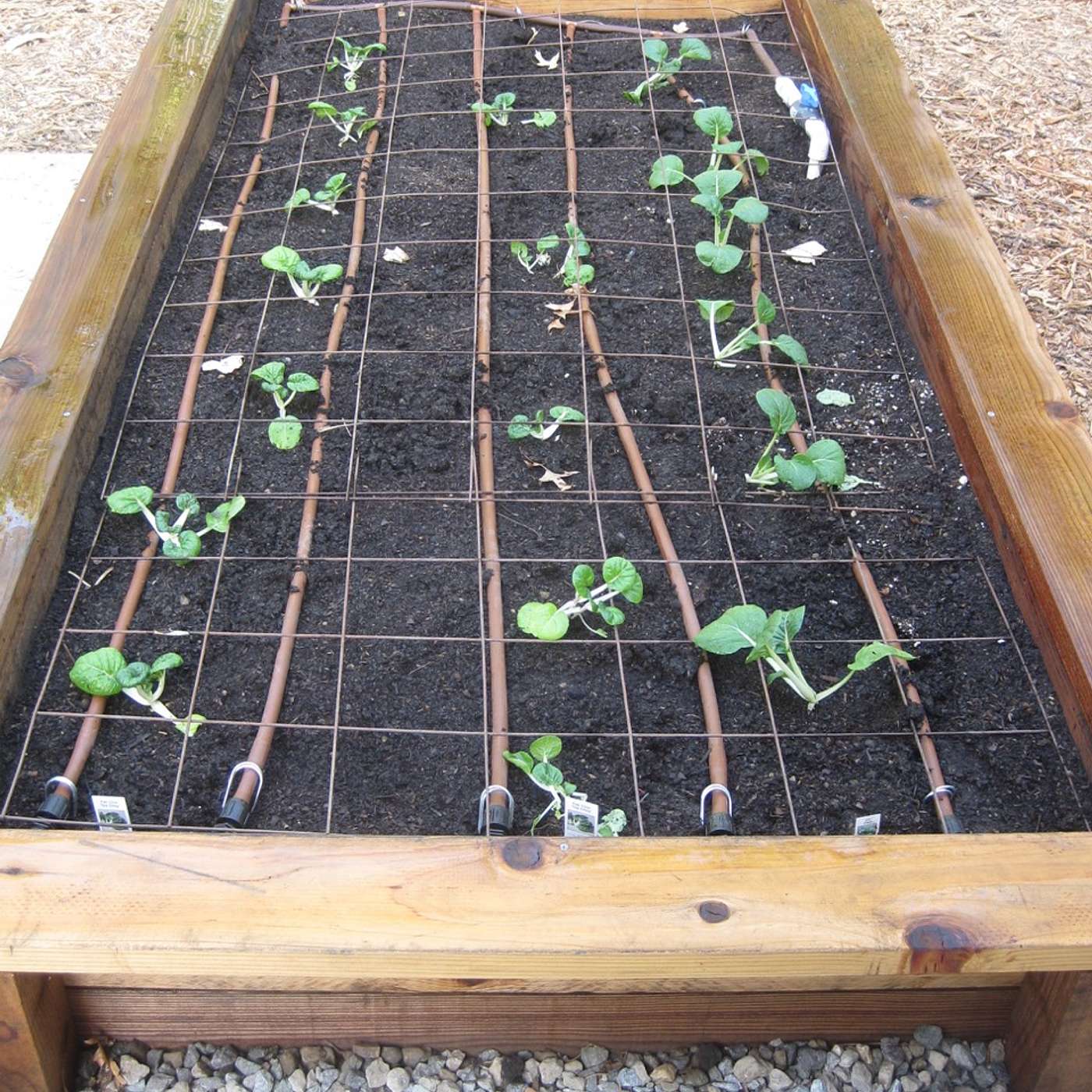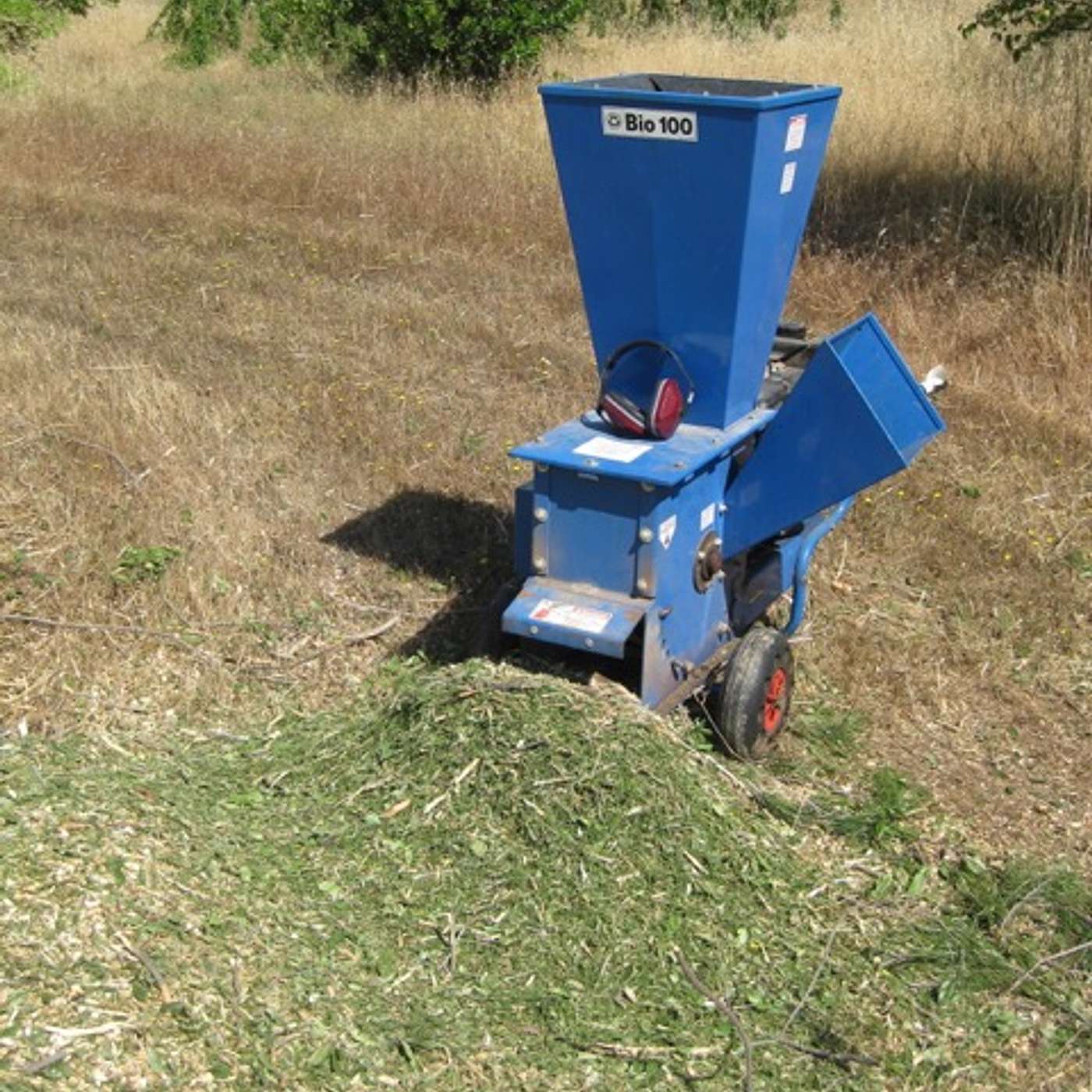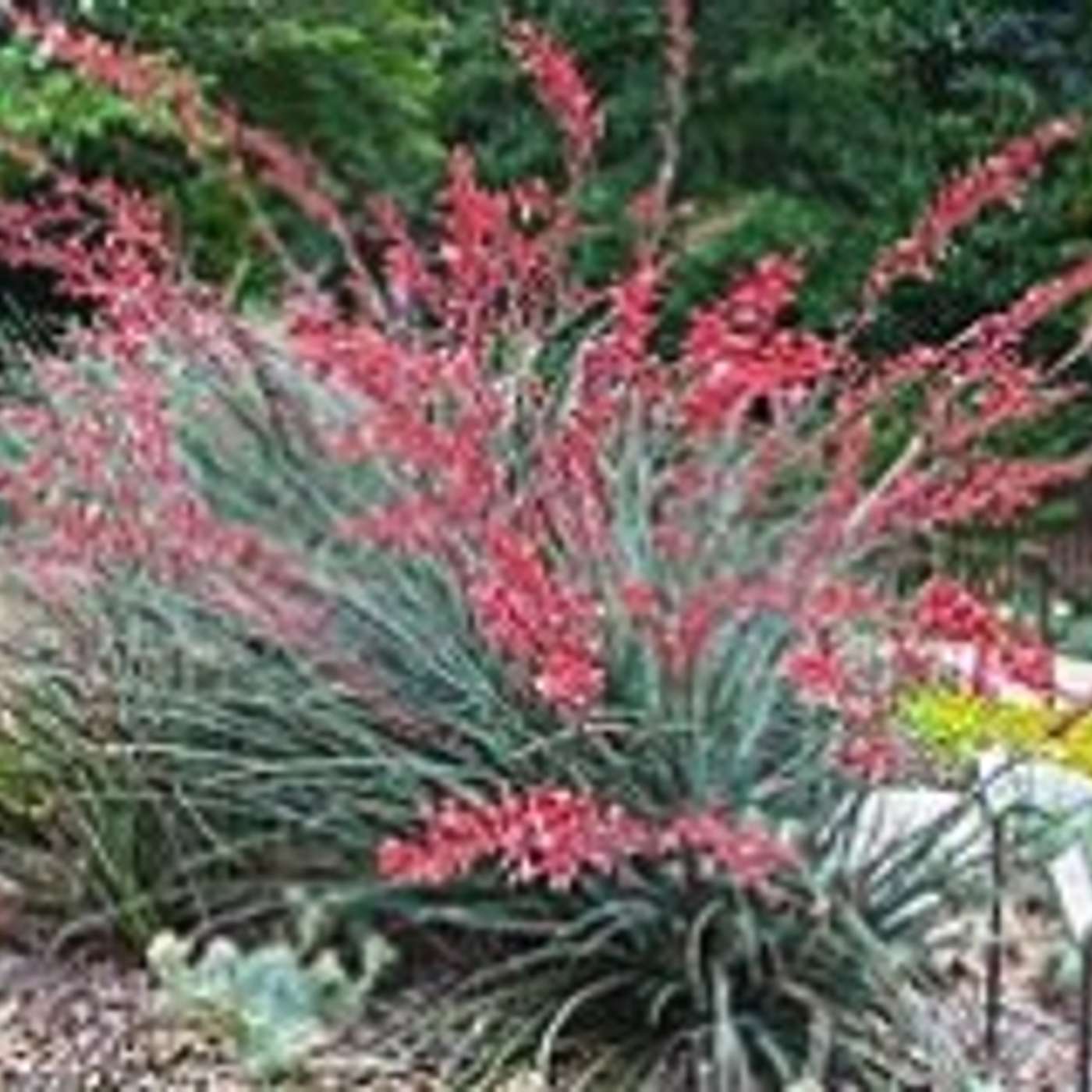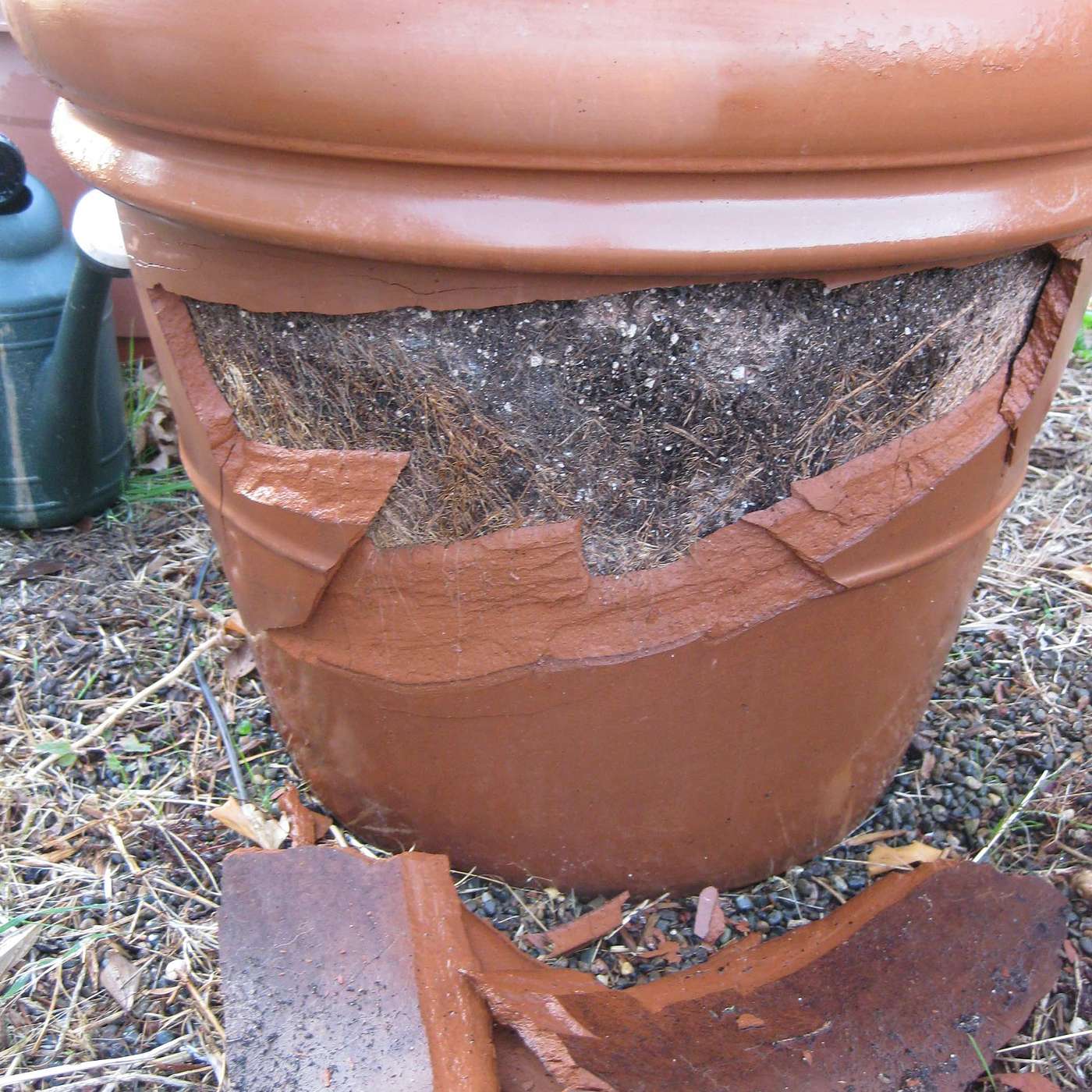
Garden Basics with Farmer Fred
Tips for beginning and experienced gardeners. New episodes arrive every Friday. Fred Hoffman has been a U.C. Certified Master Gardener since 1982 and writes a weekly garden column for the Lodi News-Sentinel in Lodi, CA. A four-decade fixture in Sacramento radio, he hosted three radio shows for Northern California gardeners and farmers: The KFBK Garden Show, Get Growing with Farmer Fred, and the KSTE Farm Hour. Episode Website: https://gardenbasics.net
Garden Basics with Farmer Fred
226 Quick Tips - The Greatest Hits
It seems that on every edition of Garden Basics with Farmer Fred, a nugget of very helpful garden information gets tossed into it, that may or may not have anything to do with the subject being discussed. Today, we present the top listened-to quick tips, along with a couple of new ones. You’re going to get short pieces of advice on growing tomatoes, cilantro, battling hornworms, the best time to harvest apples, seed planting tricks, and a lot more quick advice that will save you time and money. It’s Garden Quick Tips, the Greatest Hits!
We’re podcasting from Barking Dog Studios here in the beautiful Abutilon Jungle in Suburban Purgatory. It’s the Garden Basics with Farmer Fred podcast, brought to you today by Smart Pots. And we will do it all in just a little over 30 minutes. Let’s go!
Previous episodes, show notes, links, product information, and transcripts at the home site for Garden Basics with Farmer Fred, GardenBasics.net. Transcripts and episode chapters also available at Buzzsprout
Pictured: Tomato Harvest
Links:
Subscribe to the free, Beyond the Garden Basics Newsletter https://gardenbasics.substack.com
Smart Pots https://smartpots.com/fred/
Dave Wilson Nursery https://www.davewilson.com/home-garden/
Renee’s Garden Seeds
The Brown Thumb Mama, Pam Farley
RobertKourik.com
Linda Chalker-Scott, author, "The Informed Gardener"
Got a garden question?
• Leave an audio question without making a phone call via Speakpipe, at https://www.speakpipe.com/gardenbasics
• Call or text us the question: 916-292-8964.
• Fill out the contact box at GardenBasics.net
• E-mail: fred@farmerfred.com
All About Farmer Fred:
The GardenBasics.net website
The Garden Basics with Farmer Fred Newsletter, Beyond the Basics
https://gardenbasics.substack.com
Farmer Fred website:
http://farmerfred.com
Daily Garden tips and snark on Twitter
https://twitter.com/farmerfred
The Farmer Fred Rant! Blog
http://farmerfredrant.blogspot.com
Facebook: "Get Growing with Farmer Fred"
Instagram: farmerfredhoffman
https://www.instagram.com/farmerfredhoffman/
Farmer Fred Garden Minute Videos on YouTube
As an Amazon Associate, I earn from qualifying purchases from possible links mentioned here.
And thank you for listening
Thank you for listening, subscribing and commenting on the Garden Basics with Farmer Fred podcast and the Beyond the Garden Basics Newsletter.
GB 226 Quick Tips the Greatest Hits TRANSCRIPT
Farmer Fred 0:00
Garden Basics with Farmer Fred is brought to you by Smart Pots, the original lightweight, long lasting fabric plant container. It's made in the USA. Visit SmartPots.com slash Fred for more information and a special discount, that's SmartPots.com/Fred.
Welcome to the Garden Basics with Farmer Fred podcast. If you're just a beginning gardener or you want good gardening information, you've come to the right spot.
Farmer Fred 0:32
It seems that on every edition of Garden Basics with Farmer Fred, a nugget of very helpful garden information gets tossed into it, that may or may not have anything to do with the subject being discussed. Today, we present the top listened-to quick tips, along with a couple of new ones. You’re going to get short pieces of advice on growing tomatoes, cilantro, battling hornworms, the best time to harvest apples, seed planting tricks, and a lot more quick advice that will save you time and money. It’s Garden Quick Tips, the Greatest Hits!
We’re podcasting from Barking Dog Studios here in the beautiful Abutilon Jungle in Suburban Purgatory. It’s the Garden Basics with Farmer Fred podcast, brought to you today by Smart Pots. And we will do it all in just a little over 30 minutes. Let’s go!
Today’s Tips:
Leave a half inch in pot for water
Planting Tomatoes with Debbie
Use Tissue to Hold Soil in Pot
How to Grow Cilantro in the Summer
Tomato Hornworms
Alstroemerias (Peruvian Lily)
When to Harvest Granny Smith Apples
Toilet Paper Seed Planting
How many drip emitters per plant?
Chippers vs Rototillers
Sleep, Creep, Leap
Shards in Pot Myth
Quick Tip #1
LEAVE A HALF INCH CLEARANCE IN THE POT TO ADD WATER
Farmer Fred 1:27
Time for a quick tip. America's favorite retired college horticultural Professor, Debbie fFower is here. And I have a problem and I need your help, Debbie with a solution. And this will be quick. I always make the mistake of whenever I'm potting up a new plant, I put usually a little too much soil in the pot, up to near the top. But when I go to water, because of the force of just about any water from a hose, even on low trickle, the water doesn't seep in right away, so it tends to spill out over the sides. And I'm wondering, maybe I should not fill that pot up so much. Maybe I should leave maybe an inch or two of that pot at the top so I could just fill that whole thing with water and then walk away quick.
Debbie Flower 2:17
Well, you're certainly on the right track. You're absolutely right, you shouldn't fill it quite so full, but leave more like a half inch above the soil between the top of the media in the container and the top of the pot. That’s called headspace. And for whatever reason, a half inch works in almost any size container, where if you fill that half inch with water, you're getting enough water to saturate the media below it, and have some come out the drain holes,
Farmer Fred 2:43
but I have discovered it pays to water it in slowly. And for that you need a control on your hose end to basically slow down the flow a little bit to make sure that that water has time to seep in.
Debbie Flower 2:58
And so you don't blast the soil out of the container
Farmer Fred 3:02
and also make sure the pot is sitting on level surface.
Debbie Flower 3:05
Yes, because the media will move. The place I do my potting up, I usually put the plants on the ground to water them and it is not level. so they all come out crooked and that is annoying,
Farmer Fred 3:18
but a half inch, leave a half inch at the top when you're filling up your pot with soil to put in a new plant. I would start with maybe three quarters of the pot full of the new potting soil or the rehabbed old potting soil, put in the plant and then top it so that you've got that half inch clearance at the top without burying the plant too deeply.
Debbie Flower 3:44
Right. As you said , if you raise the plant too high, you don't get enough water into the media when you're watering. It just runs off and you can have a mess with lots of soil running off as well. go too deeply and you fill the container from the top of the media to the top of the pot you add too much water to the plant. It's a waste of water and it can cause the plant, depending on what you have under the drain holes, it can cause the plant to get too soggy and maybe die.
Farmer Fred 4:12
And a lesson we've learned from you. We just have to put it into practice. When you're filling a pot with new soil, get it wet first, make sure it is thoroughly wet. Put that new soil in a bucket, fill the bucket with water, let it sit there for a few hours, and then put it into a big old unused plant container to let it drain from the drain holes at the bottom and then put that soil into the new pot and keep it hydrated.
Debbie Flower 4:42
Yeah I don't go to that extreme. I just use kitty litter pans to mix my potting media in, and I wet it and then I work it with my hands to get it moist . but you don't want dry spots because the water takes the path of least resistance and it will travel where it's already damp. And if it's not damp, it just sort of sits there on top of the media. A lot of potting media has peat moss in it. And peat moss is very difficult to get wet. It's hydrophobic. Yeah. Which means it avoids water , it hates water. Yeah, water runs off of it.
Farmer Fred 5:16
So the only way to make it “unphobic”, basically soak it thoroughly first. All right, there’s your quick tip: leave that half inch of a lip and a container for adding water when you're watering your plant. Thank you, Debbie. You're welcome.
Quick Tip #2
PLANTING TOMATOES WITH DEBBIE
Farmer Fred
Hey, wait a minute, Debbie. Don't go away yet. Let's give out a quick tip.
Debbie Flower 5:36
Absolutely.
Farmer Fred 5:38
It's interesting that two of the most popular summertime vegetables, tomatoes and peppers, can be planted deeply. And I mean way deeply. So let's say you buy an eight inch tomato plant at the nursery, and you go to transplant it into your garden, you could actually bury six inches of that eight inch plant.
Debbie Flower 5:59
It's one of the the things I tell my students in horticulture education, you learn the rules. And then you spend the rest of your life learning the exceptions. And this is an exception, that you can plant the plant much more deeply into your garden than it was in the pot. Why is that? Well, they have the ability to make roots on their stem. If you've grown tomatoes before, perhaps you've seen that as the branches get older and bigger. And sometimes they sag and you'll see bumps along the stem. And for for that plant, they are able to make roots there.
Farmer Fred 6:37
And that's great, especially if you've started tomato plants from seed, and maybe they've gotten a bit lanky. And if you tried to plant it, at soil level in the garden, it would just fall right over? Well, one way around that is to bury it deeply. But I guess you could also if you wanted to, if you couldn't go deep, maybe you could go along and dig a trench and bury most of it in the trench and leave the top couple of inches sticking out.
Debbie Flower 7:02
That may be the better choice if the plant is very tall. Because if the plant is two feet tall, if you dug a foot and a half deep hole, the roots are gonna be really low in the soil and maybe out of reach of oxygen and water. So that trench idea would definitely work. So you just dig a trench along the soil, lay the plant in it and turn it up at the end, you may need a stick to make the end stand up straight. But that's okay. It'll be well rooted. And it's really an advantage to the plant because now it has so much more rooting system. And it takes a lot of roots to make a lot of tasty tomatoes.
Farmer Fred 7:41
Do you have to strip off the lower leaves when you plant it that way? You do not? Oh, what about pepper plants? Can you do that the same way as well?
Debbie Flower 7:50
Yes, you can do that the same way as well.
Farmer Fred 7:52
Well, how easy do you want it? Boy, that's great. You can just dig a trench and plant it, leaving the top sticking out? And would you leave out what the top two sets of leaves are? How much would you leave out sticking above the soil surface?
Debbie Flower 8:05
The top two sets would probably be my minimum, you could leave more if if you've got a sturdy plant and want more of a presence above ground.
Farmer Fred 8:13
Now we should point out that, as you pointed out, Debbie, this is the exception, not the rule. Generally when you buy plants at the nursery, you want to plant them at the same depth that they came in, in the pot from the nursery. And this is the exception.
Debbie Flower 8:31
Absolutely. It is the exception. Yes.
Farmer Fred 8:35
So don't screw it up folks.
Debbie Flower 8:39
But grow your tomatoes, especially tomatoes and peppers. They're easy, productive plants. It's so satisfying.
Farmer Fred 8:46
Yeah, exactly. Debbie Flower. Always a pleasure. Thanks for a great garden tip.
Debbie Flower 8:50
Thank you, Fred.
Quick Tip #3
USE TISSUE TO HOLD SOIL INSIDE THE BOTTOM OF A POT
Farmer Fred 8:57
Did you ever notice that when you went to fill a pot with nice new soil and you watered it, the soil would come streaming out of the drain holes on the bottom? that might tempt you to put rocks in the bottom to stop that drainage. That's not a good idea. We've talked about that before because when the water hits those rocks, it actually stops flowing and can cause a backup into the soil. Linda Chalker Scott, author of “The Informed Gardener “and “The Informed Gardener Blooms Again,” has a better idea. Use just the straight new potting mix in that pot that has the drain holes. But before you put the soil in, do this.
Linda Chalker-Scott 9:35
What I found is if you just take a little piece of newspaper or tissue paper, something that's going to break down pretty quickly, and just to temporarily cover that hole. It'll hold the soil in and then by the time the paper breaks down, you know the soil is not going to be moving through there anymore.
Farmer Fred 9:50
Linda Chalker-Scott teaches horticulture at Washington State University
SMART POTS!
Farmer Fred 9:58
I’m pretty picky about who I allow to advertise on this podcast. My criteria, though, is pretty simple: it has to be a product I like, a product I use, and a product I would buy again. Smart Pots checks all those boxes.
Smart Pots is the oldest, and still the best, of all the fabric plant containers that you might find. Smart Pots are sold around the world and are proudly made, 100%, here in the USA.
Smart Pots come in a wide array of sizes and colors, and can be reused year after year. Some models even have handles, to make them easier to move around the yard.
Because the fabric breathes, Smart Pots are better suited than plastic pots, especially for hot environments. That breathable fabric has other benefits, too. Water drainage issues? Not with Smart Pots. Roots that go round and round, chocking the rootball, like they do in plastic pots? Doesn’t happen with Smart Pots.
These benefits will help you get a bigger better plant than what you have gotten in the past with the same size plastic or other hard container.
Smart Pots are available at independent garden centers and select Ace and True Value hardware stores nationwide.
To find a store near you, or to buy online, visit smart pots dot com slash fred. And don’t forget that slash Fred part. On that page are details about how, for a limited time, you can get 10 percent off your Smart Pot order by using the coupon code, fred. f-r-e-d, at checkout from the Smart Pot Store.
Visit smartpots.com slash fred for more information about the complete line of Smart pots lightweight, colorful, award winning fabric containers and don’t forget that special Farmer Fred 10 percent discount. Smart Pots - the original, award winning fabric planter. Go to smart pots dot com slash fred.
Quick Tip #4
HOW TO GROW CILANTRO IN HOT SUMMER CLIMATES
Farmer Fred 11:53
Are you trying to grow a salsa garden? it's great that most of the ingredients for salsa ripen at about the same time in the backyard garden. you've got your tomatoes, peppers, onions, garlic, and actually if you wait until September or October to make the salsa, there might be some limes ready from your lime tree if you live in a climate where citrus can grow outdoors. But there is one ingredient that throws off that salsa recipe timing and that's cilantro, but it depends where you live. If you live in a moderate summer climate, you might be able to grow cilantro in the summertime. But if you're in a hot summer climate, well, you can forget about it. Cilantro is going to bolt, it's going to turn bitter and send up flower stalks but that has the advantage of attracting beneficial insects to those flowers. So there is that, in warm to hot summer climates. Cilantro is a cool season crop, it's planted in the fall and harvested in late winter-early spring. That's not exactly tomato time. However, if you're listened to Episode 16 you're heard Renee Shepherd of Renee’s Garden Seed Company offer us a tip on growing cilantro in hot climates.
Renee Shepherd 13:03
Use the row cover and pick it when it's very young. The hotter it is, the younger you pick it. I have seen it growing, up in the Napa Valley. I work with a grower there who actually besides growing some seed for us, he grows very fancy greens for fancy restaurants in San Francisco. And it's very hot up there. I know it's hot where you are, too, but they get up in the early hundreds quite a bit and he's pretty successful. he actually uses the row covers and afternoon shade through the summer.
Farmer Fred 13:34
Renee reminds us that even though you're harvesting the cilantro at a very young age, you increase your chances of success by planting it where it gets afternoon shade. Now there are some growing substitutes for cilantro that you can find in just about any internet search: mint, basil, parsley and chives for example. However, there are herbs that ripen in the summer that contain a more cilantro like flavor. Most of these herbs originate in Southeast Asia, usually Vietnam, and they're available at better nurseries or you can order the seeds. According to Rose Loveall-Sale of Morningsun Herb Farm in Vacaville. One of the best cilantro substitutes includes Vietnamese coriander, which is also called Raurum. The flavor is very similar to cilantro, with a hint of lemon and without the soapiness that's often associated with cilantro. It makes a great cilantro substitute during the summer when other cilantro species suffer and die under the hot dry conditions.
QUICK TIP #5
THWARTING TOMATO HORNWORMS
Farmer Fred 14:36
Oh yes, we did not forget about the critter that is probably chewing on your tomato leaves and tomatoes right now. The tomato hornworm we get a lot of questions that ask the question just Where did these blankety blank tomato worms come from? Well, contrary to a popular urban legend, the larvae of the tomato hornworm don't lurk inside tomato seeds know that tomato and tobacco hornworm begin their lifecycle as The small singular light green egg, about the size of a thick pinhead, late in late spring and early summer on the underside of the tomato leaf. So start looking for those pinhead light green eggs. Now, that egg got there courtesy of a flying culprit, the sphinx moth, both the tomato hornworms Fink's moth and the tobacco hornworm sphinx moth have similar features about a four inch wide wingspan, gray body brown wings streaks as well as yellow and white body markings. The egg laid by the sphinx moth hatches within a week and the emerging hornworm which technically is a caterpillar begins eating and eating and eating and growing a full grown hornworm satiated by its tomato plant diet. And that by the way, is supplemented with whatever else is handy, including potatoes, eggplants, and peppers can get up to four inches long hornworms feed on blossoms leaves and the fruit of those plants. How do you control them? Well hand snipping the tomato worms with scissors or pruners can be a satisfying evening chore. But the trick as seasoned gardeners know is trying to find the horned worms in the first place. tracing their black pellet shaped excrement from the ground back up to the plant usually yields successful result. The best time to find them is in the cool of the morning, or in the evening after sundown. Another popular tomato worm hangout is the tender new growth at the tops and sides of tomato plants. Now if you prefer to douse those tomato hornworms and chemicals use one that's registered for the pest. What works on tomato hornworms are stomach poisons that contain a bacterial insecticide, such as Bt, Bacillus thuringiensis, or spinosad. Both are considered safe for organic gardens that can be applied directly to the offending hornworms. However, this works best while the worms are still small. The bigger ones though are more problematic. However, there may be help already at work in your yard. That tomato experts at UC Davis point out that there's a lot of garden good guys that can help you battle the hornworms the Integrated Pest Management website at UC Davis says natural enemies normally keep tomato hornworm populations under control. hornworm eggs are attacked by the Trichogramma parasites which is a small wasp. And there's another small wasp that attacks the larvae. the University of Minnesota points out that other garden good guys such as ladybugs and lacewings will feed on the young tomato hornworms as well as their eggs. One thing you can do after harvest is dig around the tomato plants and you just might find the cocoons,pupating in the soil and that prevents the adults from developing who then emerge as moths the following spring. Now there's another insect that preys on tomato hornworms that you may not think of as being particularly beneficial but they are paper wasps. in my own yard I have watched this paper wasp land on tomato worms, bite out a big hunk of their body, and fly it back to their nest. I cheered and applauded their efforts when I saw it, and let's not forget about our feathered friends, the birds. plant some evergreen shrubs, it's a safe place for them to live and raise their young when they're not munching on your tomato hornworms and by the way, you know if you snip those tomato hornworms you can toss the leftovers to the birds, they would enjoy the treat.
QUICK TIP #6
ALSTROMERIAS (Peruvian Lily): PULL, DON’T CUT FOR LONG LASTING BLOOMS INDOORS
Farmer Fred 18:34
For most of the United States, there is one great flower that attracts a lot of pollinators, a lot of beneficial insects, a lot of hummingbirds it makes a great cut flower too. it's called the Peruvian Lily, also known as alstromeria. And it's fairly widely adapted. you can grow it from Washington down to Southern California, south from Kansas through Texas, south from Ohio down to Florida and up into the Atlantic coastal states. It is very versatile, but there's a trick to Alstroemeria if you're using it for a cut flower. Warren Roberts, the retired superintendent of the UC Davis arboretum, tells us more and how to pick them for cut flowers.
Warren Roberts 19:13
Alstroemeria is sometimes called the Peru Lily, although they really from the mainland, the main source of the varieties that species is Chile, but somehow the name chili Lily has caught on. that would be the more appropriate name. It’s a great cut flower but you don't cut them, you pull them. and it really makes them the longest lasting of all these flowers indoors.
BEYOND THE GARDEN BASICS NEWSLETTER
Farmer Fred 19:40
Coming up in the Friday September 9, 2022 Beyond the Garden Basics newsletter, Debbie Flower and I discuss the role of cation exchange capacity, C-E-C. Why should you give a rat’s patootie about C-E-C? Only if you want to know how plants actually get their nutrition, and the role that water plays in helping plants eat. It’s in Friday’s Beyond the Garden Basics newsletter. If you were a high school chemistry class wizard, you’ll be excited to learn how the electronic charges in the soil aid and abet the feeding of plants. The rest of us, well, will need a bit more help. Maybe the charts in the newsletter will be of assistance.
Find a subscription link to the newsletter in today’s show notes, or visit our website, Garden Basics dot net, where you can sign up to have the free, Beyond the Garden Basics newsletter and podcast delivered to your inbox each Friday. Also at Garden Basics dot net, you can listen to any of our previous editions of the Garden Basics podcast, as well as read a transcript of the podcast episode you are listening to now.
For current newsletter subscribers, look for All About CEC in the next Beyond the Garden Basics newsletter, coming out on the morning of Friday, September 9th, in your email. Take a deeper dive into gardening, with the Beyond the Garden Basics newsletter. And it’s free. Find the link in today’s show notes or at garden basics dot net.
Quick Tip #7
WHEN TO HARVEST GRANNY SMITH APPLES
Farmer Fred 21:13
One of the nice things about growing apples, they last a long time on the tree. In fact, you might be picking your apples a little too soon, especially when it comes to a very popular variety called Granny Smith. Granny Smith's do well in a wide variety of climates. Here in California, we tend to start harvesting them in October. Phil Pursel is with Dave Wilson Nursery based in central California. They're a wholesale grower of fruit and nut trees for the entire country. And he says when it comes to harvesting Granny Smith, you ought to wait a while. wait for the apple to change color.
Phil Pursel 21:47
In our harvest chart, we say that the granny smith really should be picked in November. And that's when you kind of see the granny smith start showing up in the grocery stores, right fresh at the start of the new season. Granny Smith come in and it's about that time. Well, Granny Smith should actually be colored almost like a golden delicious when it's picked. So when we're picking our granny smith off our mother trees at the nursery, we're picking them at the end of December. Oh, the flavor that you get off that granny smith is unbelievable. The tartness is taken out. But you get that great granny smith flavor. And you get that great crunch, and it takes all the tartness off. And at that point, I realized that for all these years I've been eating unripe apples from the grocery store because Granny Smith should look almost like a golden delicious when it's picked off the tree, the light greenish yellow color.
Quick Tip #8
TOILET PAPER SEED PLANTING TRICK
Farmer Fred 22:48
We've got more quick tips for you on this, the Quick Tips - The Greatest Hits episode on Garden Basics with Farmer Fred . anybody who's ever tried to plant carrot seeds knows the big problem. They're really really tiny. How can you get carrot seeds separated? Well, you may have to use your kids. Today's quick tip comes from the brown thumb mama, Pam Farley, with a good idea on using carrot seeds, toilet paper and your kids.
Pam Farley 23:18
So there are some things that I like to do to make it easier on the kid to plant the carrots. because otherwise you're just going to have a big old jumble. Out on the deck, layout two or three squares, toilet paper, mist it with a couple of spritzes of water and then flop the seeds on the toilet paper. Let that dry. And then place that in the garden. Kind of like homemade seed tape.
Farmer Fred 23:43
How far apart Do you space the seeds on the toilet paper?
Pam Farley 23:47
I usually do five per square. You could probably do them closer than that. But that's easy for the kids counting.
Farmer Fred 23:56
And they have smaller fingers too so they can more easily move the little seeds around. Yeah, that's the first time I think I've ever talked about carrots and toilet paper in the same sentence. Well, there you go. But that makes breaking new ground here. I like that because it is biodegradable, the toilet paper and so you could plant that with five or six seeds on it and and that's a great way to do it.
Quick Tip #9
HOW MANY DRIP EMITTERS PER PLANT?
Farmer Fred 24:30
We get a lot of questions about drip irrigation on this program and it can be, for some, drip irritation. One question we get a lot of is this: how many emitters do I need for my garden? Very good question. Garden author Robert Kourik wrote about that in his book, “Drip irrigation for every landscape and all climates” and here's his formula for the number of emitters you need for gardening, especially in raised beds.
Robert Kourik 24:58
I tried to get the equivalent of one emitter for every square foot. I use inline emitter tubing where the emitters are built inside the tubing, but there have to be pre installed every 12-18 -24 inches, depending on what you buy. So I use inline emitter tuning where the emitters are every 12 inches. On a three foot wide bed, I can get away with just two tubes. But on a four foot wide bed, I put four tubes for parallel lines the whole length of the bed.
Quick Tip #10
CHIPPER/SHREDDERS vs ROTOTILLERS
Farmer Fred 25:30
Here on the Garden Basics with Farmer Fred podcast, we'd like to offer up quick tips. Steve Zien is here, with 45 years experience in organic horticulture and soil science. What the heck would he know about garden toys? Well, let's find out. because maybe you have a spare 1000 bucks, and you want a good garden toy so you can feel like a real farmer. And you're thinking, I'm gonna get a rototiller because everybody needs to till their soil. I think, Steve, people would be surprised to learn that there's much better ways to spend that $1,000 If you want to help out your garden.
Steve Zien 26:03
What happens when you till the soil is, you destroy the soil structure. And soil structure means that your soil has a variety of pore spaces. And that's really important, especially in our area, because we have a lot of clay soil, and we have poor drainage. And so we have only very, very tiny pore spaces. And everybody thinks you till the soil and it loosens it up and creates a wide variety of pore spaces. But the problem is, is after you start irrigating or the rain comes to find clays that you all loosened up with that tillage, it starts to leach down through the soil and fills up and plugs up all those large pores. So in actuality, tillage reduces soil structure and reduces the large pore spaces. So it compacts,actually, compacts your soil in the long run.
Farmer Fred 26:56
A lot of people don't realize that for a plant to thrive besides soil and water, it needs air. rototilling basically destroys those air pockets.
Steve Zien 27:06
Yeah, absolutely critical to have as much air in there as well. That's where the better soil structure is, you have more drought resistance, more spots for nutrients and soil biology. the roots and the microbes can all move through there. Also, the tilling kills a lot of the microscopic organisms, and particularly the two major organisms that you find. As far as massive numbers. The two biggest guys in quantity are bacteria and fungi, and bacteria, little one celled critters, and they don't really get harmed too much by tilling but the fungi, they're like long strings in your garden. And they get sliced to death with a rototiller. And what's interesting is when you till the soil, killing the the majority of the fungi, you change the ratio in your soil of between bacteria and fungi, increasing the amount of bacteria. And what kind of plants prefer living in bacteria dominated soil? Everybody's garden favorite, they're called weeds. So if you want to grow weeds, kill your soil.
Farmer Fred 28:21
My heavens, I imagine, too, speaking of long stringy things in the soil, that a rototiller isn't doing worms any good.
Steve Zien 28:27
exactly. where they're slicing and dicing. It's just very, very disruptive to the ecological system of the soil. And it really sets your soil back. For the USDA, their healthy soils webpage talks about that a lot. And it's mainly for farmers because they're trying to convince farmers to do less tillage, but it also applies in the backyard garden as well.
Farmer Fred 28:55
Exactly. Now I have seen amazing things happen with my soil, just by mulching the top of the soil, adding three or four inches of mulch that was free, that arborists drop off , chipped and shredded tree parts. And because they're all different sizes, they break down at different times. But it's amazing the earthworm activity that I've seen increase since applying three to four inches of mulch on the soil and just leaving it there.
Steve Zien 29:25
Yep, Those guys are your natural rototillers. But they're only going to really do an excellent job of tilling the soil by creating air channels all the way to the surface. If you have some sort of mulch or compost on the soil surface. If that's there, they will come up every night, feed on that and then when the sun comes up, they'll go back down and so they're basically opening up drainage channels and root channels so that the water and the roots can move through your soil. the worms are also if anybody has ever By chance to touch a worm, they're really slimy. That slime is food for all the microscopic organisms that help your plants grow.
Farmer Fred 30:08
well, there you go. But I still have this $1,000 burning a hole in my pocket. What can I spend it on to feel like a farmer?
Steve Zien 30:15
A chipper/shredder , something that will create that mulch that you just talked about.
Farmer Fred 30:20
All right, yeah, the chipper/shredders vary in price from a few 100 up to several $1,000. But if you have trees on your property, or your neighbors have trees or shrubs, or you're removing shrubs or portions of trees, why put it in the trash? Put it through your chipper/shredder, and then put it on your soil, you don't have to dig it in, just lay it on top of your soil. And voila, magic.
Steve Zien 30:45
Exactly. the old school was, you want to add organic matter into the soil and we used to recommend tilling it in, working in it, and I used to have a rototiller. But we've learned that it's very destructive to the soil and you're better off just putting the mulch on top.
Farmer Fred 31:05
What's great is the more we're learning, the easier it's getting. Yeah, yeah, it is. It works like a charm. Right, Steve Zien, with 45 years experience in organic horticulture and soil science. There you go, folks, if you're going to spend 1000 bucks on a big garden toy, get yourself a chipper/shredder, not a rototiller, you're going to make the worms and your soil and your plants very, very happy. Thanks, Steve.
Steve Zien 31:31
You're welcome.
Quick Tip #11
Sleep, Creep, Leap
Farmer Fred 31:36
We got a quick tip for you. Debbie Flower is here, our favorite college horticultural professor, and she must be hanging out at nurseries too, because when I visit nurseries, it's not uncommon to hear the three words “sleep, creep and leap”. And it's usually in reference to plants. What's that all about, Debbie Flower.
Debbie Flower 31:53
Yeah, that's about those plants that you're putting from a container or ball and burlap into the landscape, or even bare root. And what they do in the years that follow the first year, when you put them in the ground, they just sleep, they're just getting adjusted. They're getting their roots to grow and expand and run into places where there's good water and nutrition. And most of the growth that's happening that first year is underground. And the second year, they start to show more above ground growth. It's not a lot. So they creep, the growth above ground is creeping. And the third year, typically, they're much better established, you got a great root system, and they just take off, so they leap. So this is applied to perennials, things that live three or more years in the landscape. And it varies in how much the sleep how deep the sleep is, I guess I'd say and how slow the creep is and how big the LEAP is. That varies by species. But it's a very good rule of thumb. And it really says to me, I have to be patient. Yes, and put it in the ground the first year, it's not going to do a whole heck of a lot. I just have to be patient.
Farmer Fred 33:09
I would think this would hold true for shrubs and trees as well.
Debbie Flower 33:13
Absolutely. shrubs and trees are technically perennials because they live more than three years. I had a student take me to task on that. So I'm a little sensitive about that. woody plants, shrubs and trees being woody plants do live more than three years if you know or have a life span more than three years. Hopefully for you they will live more than three years. But they are if you're looking at a book or you're going to the garden center, they're going to be in a separate place than the perennials. The perennials are typically the herbaceous perennials. The thing is, some of those herbaceous perennials might die to the ground and disappear all winter long and then reappear in the spring. Others will have a presence above ground, but it tends to be a smaller plant and then it springs to life and does its flowering the next year. So those things are called perennials. If they form wood, they're typically in the tree or shrub section.
Farmer Fred 34:13
There you go, sleep creep and leap. And if you have any doubts before you yank a plant out, if it's going too slow for you, put a stake in the ground next to it at exactly the height it is and then walk away for a few months and come back the following spring. I bet that plant will be taller than the stake.
Debbie Flower 34:31
Good point. The other is take pictures. Everybody's got a smartphone right?
Farmer Fred 34:35
Yep. Or we take your old smartphone and stick that in the ground and when the plant gets taller, you know it's growing.
Debbie Flower 34:41
Oh, that drawer I have full of old phones. I can do that with them.
Farmer Fred 34:46
all right. Well then we have slept, we have crept, we have left. Debbie Flower. Thanks again.
Debbie Flower 34:51
Oh, my pleasure. Thank you, Fred.
Quick Tip #12
ADDING SHARDS INSIDE A POT FOR DRAINAGE? DON’T.
Farmer Fred 34:53
We've got one more quick tip for you on this the Quick Tips Greatest Hits edition of the Garden Basics podcast. it also comes from our favorite retired college horticultural Professor, Debbie Flower. And it has to do with putting shards in the bottom of a container.
Debbie Flower 35:12
If people start putting a shard in the bottom of the container, sometimes they put a lot of shards or sometimes they put a layer of gravel or some such thing in the bottom of the container. And it's still published in places, gardening places, that says that helps drainage and the fact is, it is absolutely the opposite. It does not help drainage. Water takes the path of least resistance, and when it goes through media and hits a very drastic texture change, like a layer of rocks, or pot shards, it stops. And so the water then creates a saturation zone in the bottom of the media. And if you pour more water in the top, it'll push some of that saturation water out but it replaces the saturation with the water you just poured in. It’s a condition of growing in containers. It’s that you always have a saturation layer in the bottom of the container after you've watered it and it has drained. there's nothing you can do about that. But providing the correct depth of rootzone for the plant will keep the roots out of that saturation layer.
Farmer Fred 36:13
Garden Basics With Farmer Fred comes out every Tuesday and Friday and is brought to you by Smart Pots and Dave Wilson Nursery. Garden Basics is available wherever podcasts are handed out. For more information about the podcast, visit our website, GardenBasics dot net. That’s where you can find out about the free, Garden Basics newsletter, Beyond the Basics. And thank you so much for listening.
